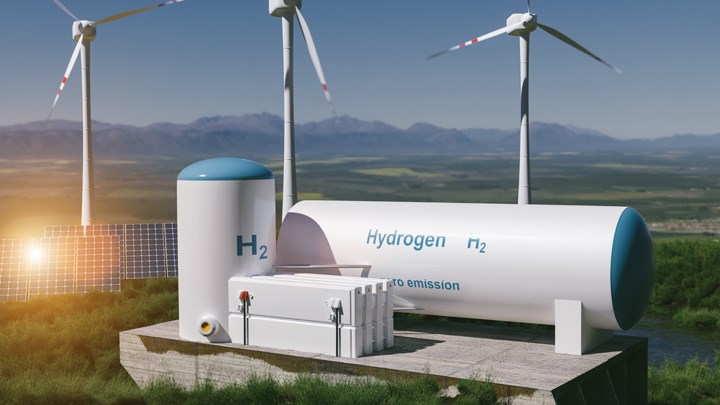Scotland’s “renewables powerhouse” ambitions: strategy seeks rush from oil and gas

THE Scottish government has laid out its vision of becoming a renewables powerhouse in its Draft Energy Strategy and Just Transition Plan – a set of priorities directed at transitioning away from oil and gas production as “fast as possible”, while significantly scaling up renewable energy production to provide cheap, green electricity to power the country’s economy.
Citing drivers such as an unprecedented uncertainty in global and national energy markets, high energy prices and the climate crisis, Scottish ministers said a failure to act now to deliver a “just transformation” of its energy system would “risk the kind of damage to industrial communities we saw in the 1980s.”
Currently, over 90% of the 1,159 TWh of energy produced each year in Scotland is from oil and gas, 5% from primary electricity and just 1% is from bioenergy and waste. The vast majority of energy produced, around 896 TWh, is exported. Of the 161 TWh consumed by Scotland in 2020, renewable energy met around a quarter (26.7%) of the energy required for Scotland’s heat, transport and electricity use.
However, the volume of available renewable energy in Scotland continues to grow. Michael Matheson, Scotland’s cabinet secretary for net zero, energy and transport, said the country already has an enviable track-record in renewables, including Scotwind, the world’s largest floating offshore leasing round.
Managed by Crown Estate Scotland, last year the independent commercial business granted rights to 17 projects to build wind farms in Scottish waters – over an area of 7,000 km2 – as part of Scotwind’s leasing process. A total of just under £700m (US$853m) will be paid by the successful applicants in option fees and passed to the Scottish Government for public spending, said CES, but it is expected that once operational, the projects will raise billions more in annual rental revenues.
Scotwind is also seen as pivotal to Scotland’s proposed aim of delivering 8 GW to 11 GW of offshore wind capacity by the end of the decade, a target set out in the country’s offshore wind policy statement in 2020.
Among other notable key ambitions the draft strategy sets out is the expansion of onshore wind generation from 8.8 GW to 20 GW of capacity over the same period, and new investments into solar, wave, tidal deployment and hydrogen. Scotland are aiming for 5 GW of low-carbon hydrogen production by 2030, or the equivalent of 15% of Scotland’s current energy needs, and 25 GW of hydrogen production capacity by 2045.
Little room for fossil fuels
In a future powered by renewables, Scotland sees little room for the oil and gas that has played an important role in the country’s economy. Not only is the unlimited extraction of fossil fuels not consistent with climate obligations, but “our previous policy position of maximum economic recovery, is no longer appropriate”, Matheson said.
It’s also a matter of oil and gas in the North Sea becoming less plentiful and harder to extract, said Matheson “As an increasingly mature basin, production in the North Sea is already in gradual decline and is expected to be around a third of 1999 levels by 2035 and less than 3% of the 1999 peak by 2050,” said the secretary. “This means that domestic production will effectively end within the next 20 years if we do nothing.”
The draft strategy recommends no new exploration for oil and gas either offshore or onshore, and no coal extraction.
The position on accelerating the clean energy transition has sparked concern with industry bodies such as Energy Transition Zone (ETZ), and Offshore Energies UK (OEUK). OEUK said it welcomed the “commitment to develop a Scottish hydrogen economy” but was “concerned at the statement’s suggestion of accelerating the decline in oil and gas production”.
“We need to ensure that the final strategy acknowledges the continuing role of oil and gas in Scotland’s energy security and economy,” Jenny Stanning, OEUK’s external relations director, said. “The plain facts mean we will need gas and oil for years to come.”
Relying on nuclear is also out, the draft strategy reasserts, stating that as well as taking decades to build, new nuclear plants will do nothing to address the urgent imperative of driving down energy prices.
Aside from the benefits of ending reliance on fossil fuels, transitioning to renewable energy could also help create an additional 58,000 low carbon jobs by 2050, the draft strategy points out. Some projects are already underway – such as the deployment of a new digital offshore energy skills passport to support the transition of skills and jobs across the industry.
Left to its own devices, the speed and direction of the green transition reads as a done deal in the strategy, but pushing forward the planned changes relies a lot on action that the UK government must take. It’s a situation that appears to cause much frustration with the Scottish government who make many references to the changes the UK must make in order for Scotland’s plans to be successful.
“This strategy sets out clear policy positions and a route map of actions with a focus out to 2030 that the Scottish Government will take and the changes that the UK Government must deliver,” the document says.
The draft strategy is open to responses until 4 April and a final version is expected to be published in late 2023.
Recent Editions
Catch up on the latest news, views and jobs from The Chemical Engineer. Below are the four latest issues. View a wider selection of the archive from within the Magazine section of this site.




